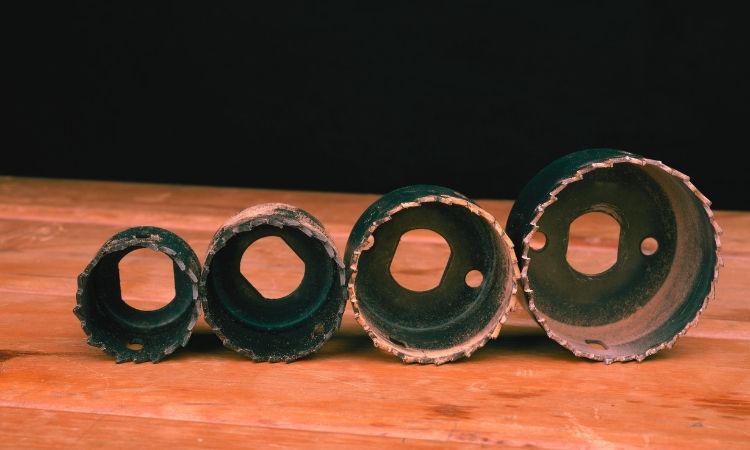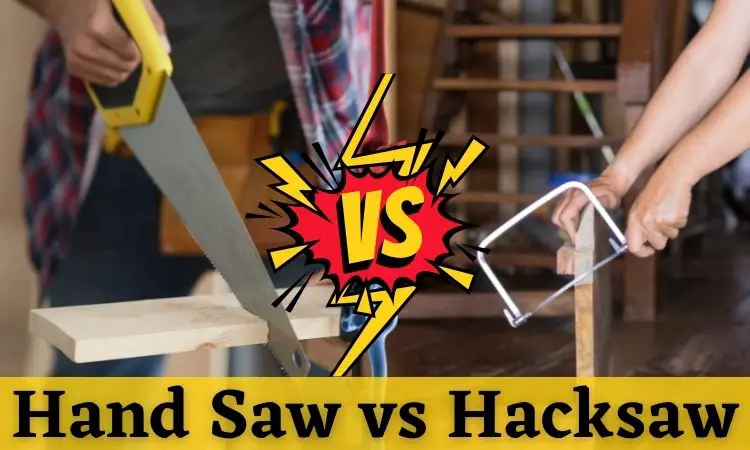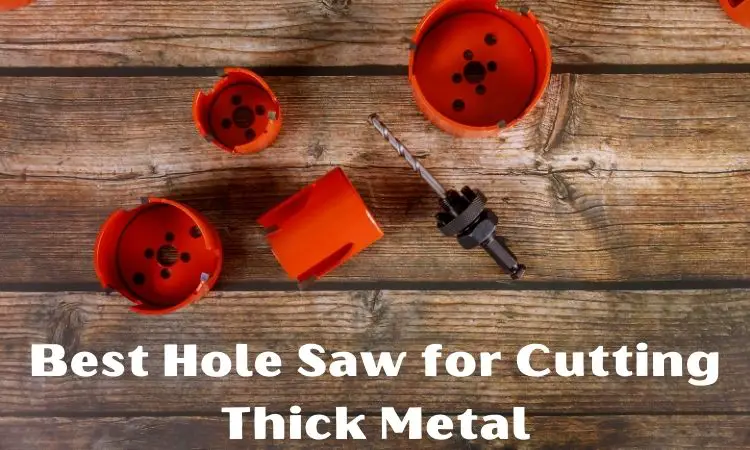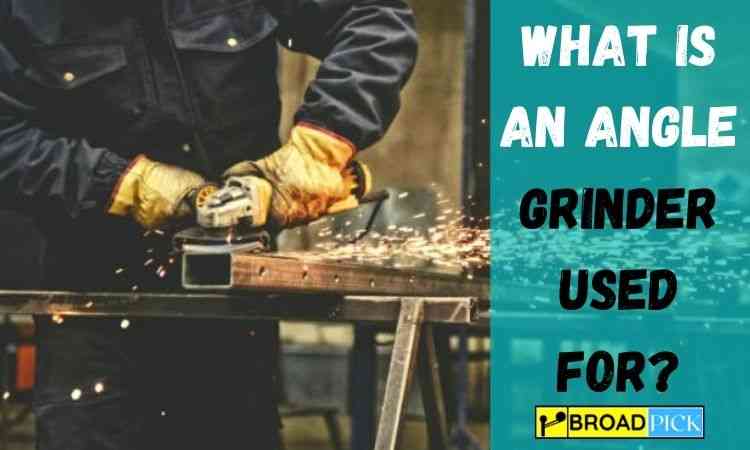If you're the kind who loves working with your hands, then one of the tasks you might have to perform from time to time is cutting through a piece of sheet metal. There are many ways to go about this task, but one of the easiest and most efficient methods involves the use of a hole saw. If you know how to do it correctly, you can easily cut circular shapes into sheet metal without much hassle.
Is sheet metal too thick for a hole saw?
If the sheet metal is too thick, then you might not be able to cut through it with a hole saw. In this case, you can use a rotary cutter or a power drill with a metal cutting blade attachment. Alternatively, you can use plasma or oxy-fuel cutter to cut the sheet metal.
What sheet metal circle cutter should you use?
There is no one-size-fits-all answer to this question, as different sheet metal circle cutters are designed for specific applications and materials. Some of the most popular models on the market include the Milwaukee electric hole saws, Dremel rotary tools, and HICO circular blade cutters.
Ultimately, you should choose a cutter based on your skill level and project requirements.
Once you have your hole saw, there are several important steps that you need to keep in mind when cutting a round hole in sheet metal.
These include using the right lubricant, ensuring proper ventilation, using safety gear such as gloves and goggles, and more.
With careful planning and attention to detail, you can easily cut through sheet metal using a hole saw. Just remember to always follow any safety precautions and practice proper techniques for optimal results.
How to cut a hole in metal?
There are a few different ways that you can cut a hole in metal, but one of the most common and easiest methods is to use a hole saw.
A hole saw is a type of circular cutting blade that can be used to easily cut through various materials, including metal.
If you're going to be using a hole saw to cut through metal, there are a few things that you need to keep in mind. Here are some steps that should help:
1) Choose the right tool for the job
First, you need to make sure that you're using the right tool for the job. This means choosing a hole saw that is designed for cutting through metal. There are many different types of hole saws on the market, so it's important to do your research and choose one that will work for your specific project.
Some tools are specialized for different types of metals, so make sure to choose accordingly.
2) Use the right lubricant
Next, you need to make sure that you're using the right lubricant on the hole saw before cutting through the metal. This will help to prevent the saw from overheating and will also make the cutting process go more smoothly.
There are a variety of different lubricants that you can use, so again, it's important to do your research and choose one that is compatible with the specific type of metal you're working with.
3) Measure and mark the spot where you want to cut the hole
Next, you need to measure and mark the spot on the metal where you want to cut the hole. It's important to be as precise as possible here so that your hole is the correct size and in the right spot.
Once you have your measurements, use a pencil or marker to lightly trace the outline of the hole onto the metal.
4) Drill a starter hole at the center of the marked spot
Once you have your measurements and the metal is properly marked, use a drill or other tool to create a starter hole at the center of the spot where you want to cut the hole. This will help ensure that your hole saw can get started easily and make clean cuts throughout the entire cutting process.
This procedure is crucial because, if done correctly, it will help prevent the hole saw from wandering off course.
5) Begin cutting the hole with the hole saw
Now, you're ready to start cutting the hole. First, make sure that your hole saw is properly lubricated, and then attach it to the drill. Once it's in place, slowly begin drilling through the metal, keeping a firm but gentle pressure on the saw and moving at a steady pace. Be sure to keep your movements as even and controlled as possible to avoid any problems.
6) Finish up by smoothing out the edges of the cut hole
Once you've finished cutting through the metal, use a file or grinder to smooth out any sharp edges around the hole.
This will help prevent injury and make the hole look more finished. Otherwise, you may need to polish the hole with a buffing wheel and some polishing compound.
7) Smooth out any rough edges with a file or sandpaper
Now, you need to take a file or sandpaper and smooth out any rough edges around the hole. This will help prevent injury and make the hole look more finished.
8) Polish the hole with a buffing wheel (optional)
If you want, you can also polish the hole with a buffing wheel and some polishing compound. This will help make the hole look nicer and reduce any chance of corrosion.
Once you've finished these steps, your hole in the metal should be ready to use! Remember to take your time and be as precise as possible throughout the process for good results. With a little practice, you'll be able to cut holes in metal like a pro.
As you can see, there are a few key steps that you need to follow in order to properly cut a hole in metal. By following these steps carefully and using the right tools and techniques, you'll be able to make clean, precise cuts every time. Good luck!
Read Also: 10 Best Hole Saw For Cutting Thick Metal
9) Test your work by fitting a round object into the newly-cut hole
If everything looks good, your newly cut hole should be fit for whatever purpose you need it! Whether it's for a pipe, wire, or anything else, a little bit of effort on your part can go a long way.
What are the right tools for cutting holes in a metal sheet?
There are a few key tools that you will need in order to cut holes in metal sheets. These include a :
Hole Saws:
These are circular saw blades that can be used to make precise and clean cuts in metal. They come in a variety of different sizes, so be sure to choose one that is the right size for your project.
Drill:
You will also need a drill or other tool with enough power to cut through the metal effectively. This will help ensure a clean and precise hole.
Twist Drill:
A twist drill is a type of metalworking drill that can be used to create starter holes prior to using the hole saw. This will help you get started easily and prevent your hole saw from wandering off course.
Step Drill Bit:
Step drill bits are another type of metalworking drill that can be used to create starter holes. They have a tapered tip that helps to prevent the hole saw from wandering off course.
Center Punch:
A center punch is a tool that is used to make a small dent in the metal. This will help you get started easily and prevent your hole saw from slipping.
File or Grinder:
Finally, you will need a file or grinder to smooth out any sharp edges around the hole and make it look more finished. This will help prevent injury and reduce the risk of corrosion.
Is a circle cutting tool for metal different than for wood?
Yes, circle cutting tools for metal are different from those for wood. Metal cutting tools are designed to cut through harder materials, so they are typically made of stronger and more durable materials.
They also often have different features that help to make the cutting process easier, such as lubrication holes or extra teeth. When using a circle cutting tool for metal, it's important to always be precise and take your time, since working with harder materials can be more difficult.
Can you cut a circle in an aluminum sheet?
Yes, you can cut a circle in an aluminum sheet using special tools and techniques. One common approach is to use a hole saw or cutting bit that has been specifically designed for working with metal, such as aluminum.
You will also need to apply lubricant or other materials to the cutting surface to help keep it cool and prevent damage. Additionally, you will need to be careful and precise when cutting the circle on an aluminum sheet to avoid any problems.
When is it necessary to anneal the aluminum sheet?
If you are working with a particularly thick or hard piece of aluminum, it may be necessary to anneal it before cutting. This process involves heating the metal to soften it, which will make it easier to cut.
You will need to be careful not to overheat the aluminum, however, as this can cause damage. Additionally, you may need to anneal the metal more than once if it is particularly thick or difficult to work with.
I'm trying to cut a hole in steel, but my drill keeps getting hot and jammed. What should I do?
If your drill is getting hot and jammed when you are trying to cut a hole in steel, there could be several possible causes. Some of the most likely culprits include
- Using a drill bit that is too small or dull
- Applying too much pressure to the drilling surface
- Working with a particularly thick or hard piece of steel.
Conclusion:
Hole saws are built for the metal market and we recommend using a hole saw to cut holes in steel, aluminum, or other metals. So, whenever you are trying to cut a hole in the steel and your drill is getting hot and jammed, it may be helpful to try using a hole saw or other metal cutting bit. In addition, you may need to adjust the amount of pressure that you apply to the drilling surface or switch to a different drill bit if possible.
If you can overcome these problems, you might be able to cut a hole in steel without any difficulties.

I am a graduate of Bangladesh Agricultural University, where I delved into various agricultural disciplines, equipping me with a profound understanding of agriculture. Beyond academics, I have hands-on experience in gardening and crop cultivation. My passion is to embrace sustainable farming and horticulture. With a BSc in Agriculture, I am dedicated to promoting environmentally conscious and efficient agrarian practices.
Bachelor of Science (BSc) in Agriculture (Hons.)
Master of Science. (Sustainable Agriculture & Food Security ) (MS)
Bangladesh Agricultural University




